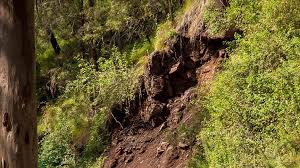TOKYO : The trend reflected the rise in torrential rainfall due to global warming, said the white paper on land, infrastructure and transport, which called for restrictions on the use of at-risk land and relocating residents to safer areas.
An average of almost 1,500 landslides rocked Japan every year during the past decade, marking an increase of almost 50 percent on the previous 10 years, according to a government report endorsed by the cabinet.
Read Also – Japan has its first ninja studies graduate after Genichi Mitsuhashi
The average number of landslides per year was 1,006 between 2000 and 2009, but jumped 46.7 percent to 1,476 between 2010 and 2019. This compares with 1,027 between 1990 and 1999.
Downpours of 50 millimeters or more per hour in the past decade were recorded 1.4 times more frequently than between 1976 and 1985.
In 2018, Japan was hit by a record 3,459 landslides, triggered by torrential rain in western Japan and a major earthquake in Hokkaido, northern Japan. Last year, Typhoon Hagibis and other torrential rainfall triggered 1,996 landslides.
Japan this month made legal moves to tighten restrictions on the development of red-zone areas, where residents’ lives are at greatest risk in the event of landslides, and to introduce a system for municipal governments to offer relocation, the report said.
It added Japan will seek to reduce flood damage by enhancing embankments, creating underground water storage facilities, and promoting evacuation in key areas.


![[商品価格に関しましては、リンクが作成された時点と現時点で情報が変更されている場合がございます。] [商品価格に関しましては、リンクが作成された時点と現時点で情報が変更されている場合がございます。]](https://hbb.afl.rakuten.co.jp/hgb/1c05689b.1adc0bec.1c05689c.e44a8101/?me_id=1376063&item_id=10000087&pc=https%3A%2F%2Fthumbnail.image.rakuten.co.jp%2F%400_mall%2Fshinko9868%2Fcabinet%2F07488747%2Fimgrc0075599190.jpg%3F_ex%3D240x240&s=240x240&t=picttext)


